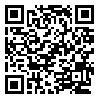Fri, May 9, 2025
[Archive]
Volume 10, Issue 2 (June 2014)
IJEEE 2014, 10(2): 81-90 |
Back to browse issues page
Download citation:
BibTeX | RIS | EndNote | Medlars | ProCite | Reference Manager | RefWorks
Send citation to:



BibTeX | RIS | EndNote | Medlars | ProCite | Reference Manager | RefWorks
Send citation to:
Samadi R, Seyedin A. Analysis and Improving the Security of the Scalar Costa Scheme against Known Message Attack. IJEEE 2014; 10 (2) :81-90
URL: http://ijeee.iust.ac.ir/article-1-591-en.html
URL: http://ijeee.iust.ac.ir/article-1-591-en.html
Abstract: (6619 Views)
Unintentional attacks on watermarking schemes lead to degrade the watermarking channel, while intentional attacks try to access the watermarking channel. Therefore, watermarking schemes should be robust and secure against unintentional and intentional attacks respectively. Usual security attack on watermarking schemes is the Known Message Attack (KMA). Most popular watermarking scheme with structured codebook is the Scalar Costa Scheme (SCS). The main goal of this paper is to increase security and robustness of SCS in the KMA scenario. To do this, SCS model is extended to more general case. In this case, the usual assumption of an infinite Document to Watermark Ratio (DWR) is not applied. Moreover watermark is assumed to be an arbitrary function of the quantization noise without transgressing orthogonality as in the Costa’s construction. Also, this case is restricted to the structured codebooks. The fundamental trade-off is proved between security and robustness of Generalized SCS (GSCS) in the KMA scenario. Based on this trade-off and practical security attack on SCS, a new extension of SCS is proposed which is called Surjective-SCS (SSCS). In the absence of robustness attack, the SSCS has more security than SCS in the same DWR. However, the SSCS achieves more security and robustness than SCS only in low Watermark to Noise Ratio (WNR) regime or low rate communications.
Keywords: Achievable rate , Flat-Host Assumption , Known Message Attack , Scalar Costa Scheme , Security , Trade-Off , Watermarking
Type of Study: Research Paper |
Subject:
Communication Systems
Received: 2013/06/12 | Revised: 2014/06/23 | Accepted: 2014/06/23
Received: 2013/06/12 | Revised: 2014/06/23 | Accepted: 2014/06/23
| Rights and permissions | |
 |
This work is licensed under a Creative Commons Attribution-NonCommercial 4.0 International License. |







